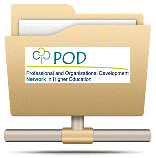Professional and Organizational Development Network in Higher Education

Professional and Organizational Development Network in Higher Education: Archives
Date of this Version
2011
Document Type
Article
Citation
Essays on Teaching Excellence Toward the Best in the Academy (2010-2011) 22(2)
Editor: Elizabeth O’Connor Chandler, University of Chicago
Abstract
Outcomes Assessment has an image problem. For some people, it calls to mind standardized testing and centralized data collection systems. Others may think of file drawers full of unexamined reports. For many, it gets pictured alongside those other “A” words (accountability and accreditation) that they associate with satisfying someone else’s expectations. For some people, in some places, at some times, these are the kinds of images that outcomes assessment has evoked.
But these are not the only ways to see outcomes assessment, and it has never meant just those things. Outcomes assessment is first and foremost for departments: It helps them identify what their students are learning, across courses and over time, and it helps them reflect on the effects that their educational programs are having. Departments that associate outcomes assessment primarily with accreditation requirements or institutional reports might miss out on the most valuable conversations that it could help their faculty members have: How are we doing, as a group, at helping students learn and challenging them to excel? What are the collective effects of our individual efforts to engage students in our discipline?
Outcomes assessment may have other audiences and purposes as well, but it serves them best when it serves departments first. This essay proposes a set of guiding principles to help departments develop productive approaches to outcomes assessment, and to help them gain the greatest benefit for the department from their assessment efforts.
Included in
Educational Assessment, Evaluation, and Research Commons, Higher Education Commons, Higher Education Administration Commons


Comments
Copyright 2011, Wayne Jacobson. Used by permission